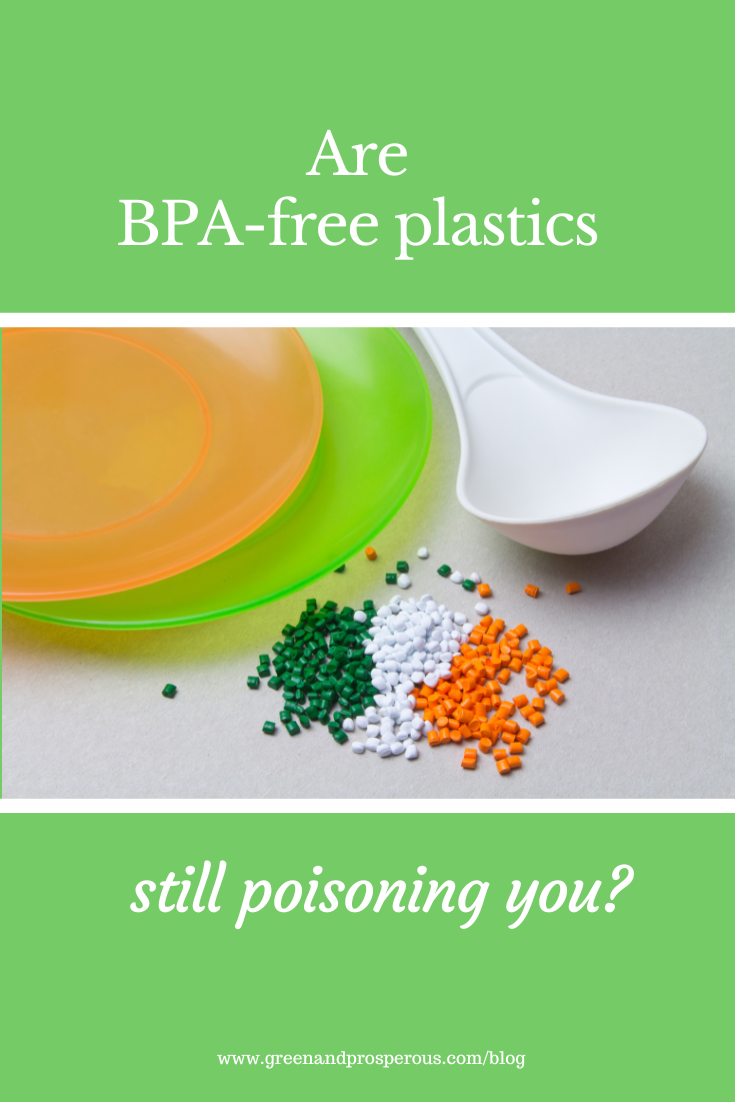Are BPA-free plastics still poisoning you?
/What is the problem with BPA?
In my book on toxic chemicals, I wrote about the health effects of Bisphenol-A (BPA) as being pervasive: this chemical compound, found in plastics and even in some cash register receipts, has been linked to problems with metabolism, behavior, reproduction, the development of placentas and stem cells, and the growth of cancerous tumors. BPA has been blamed (at least in part) for obesity, diabetes, asthma, infertility, and even ADD. Babies and children whose bodies are still developing are especially vulnerable to the effects of BPA, but their exposure is inevitable: studies suggest that the bodies of a majority of the US population (up to 92%), and much of the world population, contain BPA.
In the US, public outrage over manufacturers’ use of BPA in plastics led the US Food and Drug Administration (USFDA) to ban its use in baby bottles. Many manufacturers went further, removing BPA from other plastics and even from metal containers (like baby formula and canned foods), marketing them as BPA-free to a public that was eager to minimize its exposure to this harmful chemical.
Alternatives to BPA are just as harmful
The problem is, manufacturers had to find a substitute, since BPA was a vital ingredient in making plastic durable. The substitutes most commonly used, Bisphenol-S (BPS) and Bisphenol-F (BPF), were initially thought to be relatively harmless, and more resistant to leaching than BPS when exposed to sunlight or heat. But research has found that they are just as harmful, and in some cases, even more harmful, than BPA. That’s both alarming and frustrating to many people who are trying to minimize their exposure (and their kids’ exposure) to toxic chemicals in the products they use every day.
What makes BPS and BPF so harmful, especially to growing bodies, is basically the same thing that made BPA a hazard: they disrupt the normal functioning of cells. A study by scientists at the University of Texas medical branch at Galveston found that, like BPA, BPS interferes with the response of cells to the hormone estrogen, and as a result, changes the way that cells naturally grow and die and release hormones. And BPS can have these effects at extremely small doses (i.e. less than one part per trillion, or a picomolar concentration). However, unlike BPA, BPS has not been extensively studied, so we have a much less comprehensive picture of the damage it does to the human body. On the other hand, since 2011, there have been more studies of BPS conducted in vivo, on live bodies, than in vitro, in a petri dish, which makes the evidence for the harmful effects of BPS much stronger.
How to reduce your exposure to bisphenols
While there is not much being done at the moment to strengthen the ability of the EPA and other US government regulatory bodies to monitor and test all the bisphenols that are being manufactured, and there are ongoing debates about whether the new and improved Toxic Substances Control Act (TSCA) will really be more effective than the old one, you can still do a lot to lessen your exposure to harmful chemicals like BPS, and BPF, similar to what you would do to minimize your risks from BPA. First, discard scratched plastic dishes and utensils, especially if they are being used by your kids. Second, don’t heat plastics in the microwave, even if they are labeled “microwave safe”. If you pack your kids’ lunches in plastic, make sure they aren’t being heated in microwaves at school, or pack a paper plate for this purpose. Third, drink from steel or glass, not plastic containers. This is especially important if you go hiking or camping in the heat of the summer sun. Finally, look for plastics that are labeled EA-free. This is a relatively new form of labeling which points to the absence not only of BPA, but of any estrogen-mimicking chemicals. There are more tips available in this Washington Post article, published in January 2015.
Finally, knowing that BPA-free doesn’t necessarily mean safe may make you less inclined to shell out the extra money for BPA-free plastics. Ultimately it’s up to you to decide: if you are purchasing from a company you trust, and it gives you greater peace of mind to buy BPA-free, then why not continue? Just don’t be fooled by the “greenwashing” some manufacturers engage in to lull you into complacency and get you to buy their pricier products. Nor should it be a license to just give up trying: our exposure to harmful chemicals is at an all-time high, much greater than in our parents’ and grandparents’ generations, and we are less genetically equipped to process these toxins. Minimizing your exposure to harmful chemicals is not easy; it’s a daily process of being mindful of what you consume, where the products you use come from, and how they are manufactured. But until people take the initiative to put pressure on their government (and manufacturers) to come up with truly safer alternatives, we will all have to become more vigilant in our daily lives to keep our families as safe as we can.
Like this? Please pin!






































